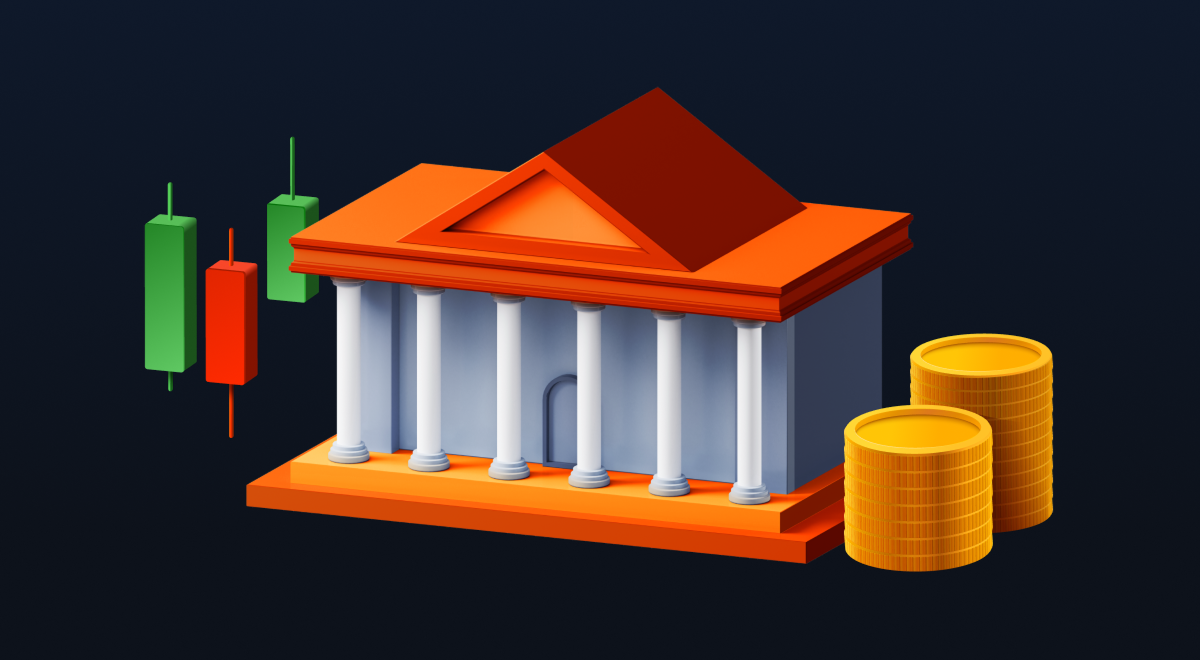The Impact of Central Bank Policies on Forex Markets
May 16 2025

Understanding central bank policies and leveraging solutions like cashback can be the key to success in forex trading.
Effective trading relies heavily on understanding the monetary policies implemented by the world's most influential central banks. These institutions' decisions can significantly impact financial markets, and every investor should carefully follow their developments.
Regardless of experience level, investors—whether experts, beginners, or intermediates—can gain valuable insights from the central banks' activities and use this knowledge to increase their profits.
In addition, combining this analytical approach with an efficient tool such as cashback, which helps optimise investment costs, makes achieving success in forex trading even easier.
Through a cashback programme such as STIC Cashback, traders can receive constant partial refunds on commissions based on their trading volume.
Let's take a step-by-step look at how investors can take advantage of central bank monetary policies.
Why Understanding Central Bank Policies is Crucial in Forex Markets
Leading central banks, such as the US Federal Reserve, the ECB (European Central Bank), the British Bank of England or the Japanese Bank of Japan, have the power to influence the trends of the most traded currencies in the forex market.
This influence arises because one of the main objectives of central banks is to ensure the stability of markets within their jurisdiction. To achieve this, they often implement measures that immediately increase or decrease in the value of their reference currency.
One of the key tools to govern a country's economy is setting the size of interest rates. When there is a need to stimulate purchases, a central bank may decide to lower interest rates, so as to make real estate loans and mortgages more affordable, encouraging consumers to spend money.
In addition, central banks might use quantitative easing by increasing the amount of money in circulation through direct purchase of government bonds.
The resulting increase in liquidity available to citizens and financial institutions boosts consumption and supports economic growth. This approach was notably applied during the financial crisis post-2008 and, more recently, in 2020 due to the pandemic.
Conversely, raising interest rates favours savings decisions by citizens and can help prevent uncontrolled increase in inflation.
Effects of Central Bank Decisions on Trading
As is evident, these interventions always have significant impact on investment tools' markets: if interest rates drop, new bonds become less appealing than existing fixed-rate ones, and investors are generally more attracted to the stock market rather than traditional savings tools.
In this scenario, the local currency tends to depreciate, which favours exports and, for traders, this depreciation creates an opportunity to invest in foreign currencies offering, at that time, higher returns.
On the contrary, the effect of the rise in interest rates resulting from central bank policies on forex markets consists in a greater attractiveness of investments in the national currency, strengthening its value, and in a certain distrust in the stock market due to reduced exports.
Central Bank Announcements and Forex Trading
The above overview highlights the importance for traders—whether experts, intermediates, or beginners—of monitoring the decisions of the world's leading central banks. Doing so provides useful and reliable insights for making informed trading operations on forex markets.
Special attention should be paid to central bank announcements regarding their future interventions, so as to adequately anticipate next market scenarios and develop effective forex trading strategies.
Central bank announcements, individual decisions and—more generally—policies can significantly influence markets, even by shaping a certain market sentiment among consumers and investors: these expectations, in turn, will dictate the trends of securities and currencies in a way that only well-informed traders can predict.
Cashback as a Solution for Success in Trading
In any case, adopting correct forex strategies and understanding central bank policies is only one part of a trader's wealth for successful investments.
Forex investors can also leverage specific tools to optimise costs and boost profits. One of the most effective tools, as mentioned above, is the trading cashback programme.
Forex Cashback offers refunds on commissions for every trade made on the market. With programmes such as STIC Cashback, traders can optimise investment costs and ensure an additional budget that can be reinvested in new profit opportunities.
Discover the key to trading success by using cashback for forex together with the most suitable strategies for the scenarios created by central banks. Start today with STIC Cashback!